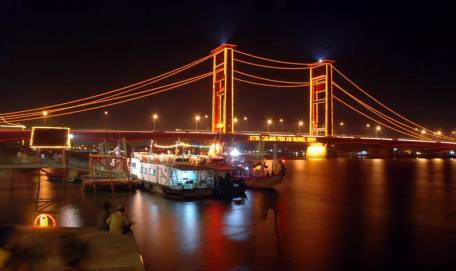World famous is the crater Toba Lake in the Batak highlands; approximately five hours drive from Medan. Toba Lake is the largest lake in South East Asia and also one of the most spectacular, surrounded by tall mountains and with the large island of Samosir in the middle. If we descend from the mountain we see the lake glittering in all its beauty. The Dutch writer Rudy Kousbroek even called Toba Lake, ‘the most beautiful place on earth’. Most visitors stay on the peninsula of Tuk Tuk on Samosir, named after the linguist Herman Neubronner van der Tuuk. In general people stay several days on Samosir to discover the island, to visit traditional Batak villages, to swim in the lake and go to the hot springs in Pangururan.
The cen terpiece of North Sumatra, Lake Toba’s bracing climate and magnificent panoramas clear the mind and soothe the soul. For decades a magnet from regional and foreign visitors alike, Toba has developed into a full-featured highland resort while retaining the rustic charm and relaxed ambiance that define Toba’s attraction. Formed by a stupendous prehistoric volcanic explosion, the 100 km long lake is the largest in Southeast Asia and one of the deepest and the highest in the world. The drama of that cataclysmic birth persist in 500 meter cliffs dropping into the blue-green waters, surrounded by steep, pine covered sloped, the climate is fresh and pleasant, with just enough rain to support the lush vegetation.
terpiece of North Sumatra, Lake Toba’s bracing climate and magnificent panoramas clear the mind and soothe the soul. For decades a magnet from regional and foreign visitors alike, Toba has developed into a full-featured highland resort while retaining the rustic charm and relaxed ambiance that define Toba’s attraction. Formed by a stupendous prehistoric volcanic explosion, the 100 km long lake is the largest in Southeast Asia and one of the deepest and the highest in the world. The drama of that cataclysmic birth persist in 500 meter cliffs dropping into the blue-green waters, surrounded by steep, pine covered sloped, the climate is fresh and pleasant, with just enough rain to support the lush vegetation.
Toba Lake is a 100kms x 30kms volcanic lake in North Sumatra, Indonesia. Toba Lake has become one of the main tourist attractions for a long time in North Sumatra apart from Bukit Lawang and Nias, visited by both domestic and foreign tourist.



